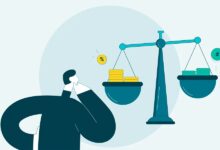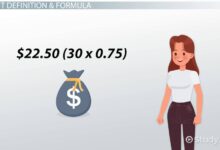Only Sales Extension: 7 Powerful Strategies to Skyrocket Revenue
In today’s hyper-competitive market, the only sales extension isn’t just a tool—it’s a game-changer. Discover how top companies leverage this strategy to boost conversions, enhance customer experience, and dominate their niches.
Understanding the Only Sales Extension Concept

The term only sales extension might sound niche, but its implications are vast. At its core, it refers to a focused, streamlined approach to extending sales capabilities beyond traditional methods—without bloating teams or budgets. It’s about doing more with less, but smarter.
What Exactly Is an Only Sales Extension?
An only sales extension is a strategic model where businesses extend their sales reach using lean, technology-driven, or outsourced solutions rather than expanding internal sales departments. This could involve AI-powered chatbots, affiliate networks, CRM-integrated automation tools, or even white-label sales teams that operate under your brand.
- It’s not about replacing your sales team—it’s about amplifying it.
- The focus is on scalability, cost-efficiency, and data-driven outreach.
- Examples include SaaS platforms using embedded sales bots or e-commerce brands leveraging influencer networks as remote sales agents.
“The future of sales isn’t in headcount—it’s in reach.” – Forbes, 2023
How It Differs From Traditional Sales Expansion
Traditional sales growth often means hiring more reps, opening new offices, or investing in large-scale training programs. In contrast, the only sales extension model prioritizes agility and precision.
- Cost: Traditional expansion can cost $100k+ per year per rep (salary, benefits, tools). Only sales extensions often operate at 30–50% of that cost.
- Speed: Hiring and onboarding take weeks or months. An extension via automation or partner network can go live in days.
- Scalability: Traditional models scale linearly. Only sales extensions can scale exponentially through digital leverage.
For example, Salesforce uses AI-driven Einstein bots as part of its only sales extension strategy, handling millions of customer interactions without adding human agents.
Why Only Sales Extension Is a Game-Changer in 2024
The business landscape has shifted. Customers expect instant responses, personalized offers, and frictionless buying experiences. The only sales extension model meets these demands head-on by integrating technology, data, and strategic partnerships into the sales funnel.
Meeting Modern Customer Expectations
Today’s buyers don’t want to wait. They research online, compare options, and expect immediate engagement. A delayed response can mean lost revenue.
- Studies show that 78% of customers buy from the first company to respond (InsideSales.com).
- Only sales extensions use chatbots, automated email sequences, and AI-driven outreach to ensure 24/7 availability.
- These tools don’t just respond—they qualify leads, schedule demos, and even close low-ticket sales autonomously.
For instance, Intercom integrates AI bots with human handoff, creating a seamless only sales extension that boosts conversion rates by up to 40%.
Reducing Operational Overhead
One of the biggest advantages of the only sales extension is cost efficiency. Instead of investing in full-time salaries, office space, and benefits, companies can deploy scalable digital solutions.
- A single AI sales bot can handle thousands of conversations daily at a fraction of the cost of a human rep.
- Outsourced sales partners or affiliate networks are paid on performance—aligning incentives and reducing risk.
- CRM integrations like HubSpot allow small teams to manage large pipelines with minimal overhead.
“We reduced our customer acquisition cost by 62% after implementing an only sales extension via AI and partner reps.” – CRO, TechScale Inc.
Key Components of a Successful Only Sales Extension
Building an effective only sales extension isn’t just about slapping a chatbot on your website. It requires a strategic blend of technology, data, and human oversight.
Sales Automation Tools
Automation is the backbone of any only sales extension. These tools handle repetitive tasks, freeing up human reps for high-value interactions.
- Email automation: Tools like Mailchimp or ActiveCampaign send personalized follow-ups based on user behavior.
- Chatbots: Platforms like Drift engage visitors in real-time, qualifying leads before human contact.
- Scheduling bots: Calendly integrations allow prospects to book meetings without back-and-forth emails.
When combined, these tools create a self-sustaining sales engine that operates around the clock.
CRM Integration and Data Flow
A disconnected system kills efficiency. The only sales extension must be fully integrated with your CRM to ensure seamless data flow and lead tracking.
- Every interaction—chat, email, call—should be logged automatically in your CRM.
- Lead scoring models help prioritize high-intent prospects for human follow-up.
- Real-time dashboards give sales managers visibility into extension performance.
For example, Zoho CRM offers built-in AI and automation features that make it ideal for only sales extension setups.
Human-in-the-Loop Oversight
Despite the rise of AI, human judgment remains critical. The best only sales extension models use a “human-in-the-loop” approach—where machines handle volume, and humans handle complexity.
- AI qualifies leads, but a human rep closes enterprise deals.
- Bots handle FAQs, but escalate nuanced objections to live agents.
- Managers review AI performance weekly to refine scripts and workflows.
This hybrid model ensures scalability without sacrificing quality.
Real-World Examples of Only Sales Extension in Action
Theory is great, but results matter. Let’s look at real companies using the only sales extension to drive growth.
Case Study: Shopify’s Partner Network
Shopify doesn’t just sell its platform—it empowers a global network of developers, designers, and agencies to sell on its behalf. These partners act as an only sales extension, earning commissions for every referral.
- Over 1.7 million merchants use Shopify, many acquired through partner referrals.
- Partners get training, marketing assets, and revenue share—creating a win-win.
- Shopify maintains brand control while scaling sales exponentially.
This model has helped Shopify grow its merchant base by 35% year-over-year without expanding its direct sales force.
Case Study: Gong’s AI-Powered Sales Intelligence
Gong uses AI to analyze sales calls and provide real-time coaching. But they also use AI as part of their only sales extension by automating follow-ups and lead nurturing.
- Their system identifies high-intent leads based on call sentiment and engagement.
- Automated sequences are triggered for leads showing buying signals.
- Sales reps are alerted only when a lead is sales-ready.
Result? A 50% increase in demo-to-close rate and a 30% reduction in sales cycle length.
Case Study: Dropbox’s Freemium-to-Paid Conversion Engine
Dropbox uses an only sales extension model by converting free users into paying customers through automated in-app messaging, email sequences, and AI-driven recommendations.
- No direct sales rep contacts the user initially.
- The system identifies usage patterns (e.g., hitting storage limits) and triggers upgrade prompts.
- Only high-value enterprise leads are passed to human reps.
This approach has helped Dropbox achieve a 70% conversion rate from free to paid tiers in targeted segments.
How to Build Your Own Only Sales Extension
Ready to implement your own only sales extension? Here’s a step-by-step guide to get you started.
Step 1: Audit Your Current Sales Process
Before building, understand what’s working and what’s not.
- Map your customer journey from awareness to close.
- Identify bottlenecks—where do leads drop off?
- Analyze response times, conversion rates, and CAC (Customer Acquisition Cost).
This audit will reveal where an only sales extension can add the most value—whether it’s faster follow-ups, better lead scoring, or automated nurturing.
Step 2: Choose the Right Technology Stack
Your tech stack is the engine of your only sales extension. Pick tools that integrate well and align with your goals.
- CRM: HubSpot, Salesforce, or Zoho.
- Automation: ActiveCampaign, Zapier, or Make.
- Chatbots: Drift, Intercom, or Tidio.
- Analytics: Gong, Chorus, or Clari for sales intelligence.
Ensure all tools can sync data in real-time to avoid silos.
Step 3: Define Triggers and Workflows
Automation is only as good as its logic. Define clear triggers for each action.
- If a user visits the pricing page 3 times in a week → trigger a personalized email with a discount offer.
- If a chatbot detects high intent (e.g., asking about pricing) → escalate to a live rep within 5 minutes.
- If a free user hits 80% storage capacity → send an in-app message with upgrade options.
Use A/B testing to refine messaging and timing.
Step 4: Train and Integrate Human Teams
Your sales team isn’t obsolete—they’re now the elite unit handling high-value deals. Train them to work alongside the only sales extension.
- Teach reps how to interpret AI-generated lead scores.
- Set up SLAs (Service Level Agreements) for response times on hot leads.
- Hold weekly syncs to review AI performance and adjust strategies.
The goal is synergy, not replacement.
Common Pitfalls to Avoid with Only Sales Extension
Even the best strategies can fail if executed poorly. Here are common mistakes to watch for.
Over-Automating the Customer Experience
Too much automation feels robotic and impersonal. Customers can tell when they’re talking to a script.
- Avoid generic messages like “Hi {First Name}, interested in our product?”
- Use dynamic content that reflects user behavior (e.g., “I saw you checked out our analytics dashboard—want a demo?”)
- Always offer an easy way to speak to a human.
Remember: the only sales extension should enhance, not replace, human connection.
Ignoring Data Privacy and Compliance
Automated systems collect vast amounts of data. Misuse can lead to legal trouble and brand damage.
- Ensure compliance with GDPR, CCPA, and other privacy laws.
- Be transparent about data collection in your privacy policy.
- Allow users to opt out of automated communications.
Tools like Cookiebot can help manage consent and compliance automatically.
Failure to Monitor and Optimize
Launching an only sales extension isn’t a “set it and forget it” move. It requires ongoing optimization.
- Track KPIs: response rate, conversion rate, CAC, customer satisfaction.
- Review chatbot transcripts monthly to improve scripts.
- Update email sequences based on open and click-through rates.
Use tools like Google Analytics and CRM reports to measure impact.
Future Trends in Only Sales Extension
The only sales extension is evolving fast. Here’s what’s coming next.
AI-Powered Predictive Selling
Next-gen AI won’t just respond—it will predict. Systems will anticipate customer needs before they’re expressed.
- AI analyzes past behavior, market trends, and even social sentiment to forecast buying intent.
- Proactive outreach: “We noticed your team is growing—here’s a custom plan for 10 new users.”
- Companies like Salesforce Einstein are already deploying predictive lead scoring.
This shift from reactive to proactive selling will redefine the only sales extension.
Integration With Voice and AR/VR
As voice search and virtual reality grow, so will the only sales extension.
- Imagine a customer asking Alexa, “Find me a CRM for small business,” and your AI bot responds with a personalized offer.
- VR showrooms where AI guides prospects through product demos in 3D.
- These technologies will expand the reach of the only sales extension into new dimensions.
Early adopters will gain a massive competitive edge.
Decentralized Sales Networks
Blockchain and Web3 are enabling decentralized sales models where anyone can become a sales agent.
- Smart contracts automatically pay affiliates when a sale is made.
- No central authority needed—trust is built into the system.
- Projects like Binance use referral networks with instant crypto payouts.
This could democratize the only sales extension, making it accessible to startups and solopreneurs.
Measuring the Success of Your Only Sales Extension
You can’t improve what you don’t measure. Here’s how to track the ROI of your only sales extension.
Key Performance Indicators (KPIs)
Focus on metrics that reflect both efficiency and effectiveness.
- Lead Response Time: Aim for under 5 minutes for high-intent leads.
- Conversion Rate: Track how many automated leads become customers.
- Customer Acquisition Cost (CAC): Compare pre- and post-extension CAC.
- Customer Satisfaction (CSAT): Survey users on their experience with bots and automated flows.
Tools like Tableau can visualize these KPIs in real-time dashboards.
A/B Testing and Continuous Improvement
Optimization is an ongoing process. Use A/B testing to refine every element.
- Test different chatbot scripts: formal vs. casual tone.
- Compare email subject lines to boost open rates.
- Experiment with timing—immediate follow-up vs. 24-hour delay.
Even small improvements compound over time. A 5% increase in conversion can mean millions in revenue for high-volume businesses.
ROI Calculation Framework
To calculate ROI, use this formula:
ROI = (Revenue Generated – Cost of Extension) / Cost of Extension
For example:
- Revenue from automated leads: $500,000
- Cost of tools and partners: $100,000
- ROI = ($500,000 – $100,000) / $100,000 = 4.0 or 400%
Aim for at least 200% ROI to justify continued investment.
What is an only sales extension?
An only sales extension is a strategic approach to expanding sales reach using technology, automation, and external partners—without expanding the internal sales team. It focuses on efficiency, scalability, and data-driven outreach.
How does an only sales extension reduce costs?
By leveraging automation and performance-based partnerships, businesses avoid the high costs of hiring, training, and maintaining a large sales force. AI tools and bots can handle thousands of interactions at a fraction of the cost of human reps.
Can small businesses use only sales extension?
Absolutely. In fact, small businesses often benefit the most. With limited budgets, they can use affordable tools like chatbots, email automation, and affiliate networks to compete with larger players.
Is only sales extension suitable for B2B companies?
Yes. B2B companies use only sales extensions for lead qualification, demo scheduling, and nurturing long sales cycles. AI-driven insights from platforms like Gong or Clari enhance human rep effectiveness.
What tools are essential for building an only sales extension?
Key tools include a CRM (HubSpot, Salesforce), automation platform (Zapier, ActiveCampaign), chatbot (Drift, Intercom), and analytics (Google Analytics, Tableau). Integration between tools is critical for success.
The only sales extension is not a passing trend—it’s the future of scalable, efficient sales. By combining technology, data, and strategic human oversight, businesses can extend their reach, reduce costs, and deliver better customer experiences. Whether you’re a startup or an enterprise, now is the time to build your only sales extension and stay ahead of the curve.
Further Reading:



